Time for Squat Jumps
Graph potential energy at the maximum height of a jump.
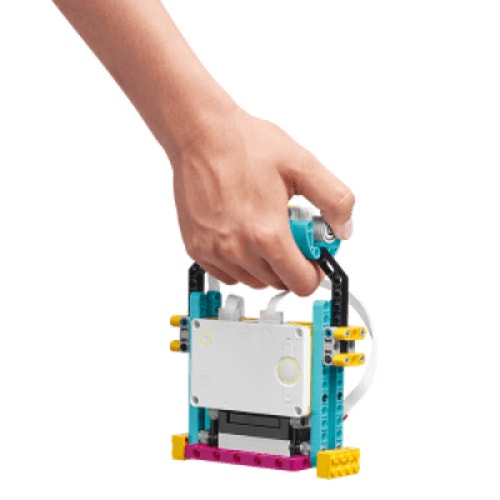
Engage
(Before Class, 20 Min.)
- This lesson explores potential energy. The equation for potential energy is Ep=mgh. The value of ‘g’ is known, and ‘m’ can be found or approximated. The unknown variable in this lesson is the height of a jump, which your pupils will measure. They'll start by using the Distance Sensor pointing downward to measure their maximum distance from the ground as they jump (make sure that they're on a flat surface). Later on, they'll explore other methods using the Hub's Acceleration Sensor.
Ignite a Discussion
Start a discussion by asking questions related to the lesson. Here are a few suggestions:
- What's potential energy?
- How high can you jump?
- How much (potential) energy is that?
Have your pupils write down their thoughts as a hypothesis.
Explore
(During the Lesson, 30 Min.)
- Have your pupils build a kettlebell that can record jump-related data. They can create their own models or follow the building instructions in the app to build the Kettlebell model.
- Ask your pupils to try out their models using the suggested program.
- Ensure that they control their jumps, pointing the kettlebell straight towards a smooth surface (i.e. avoiding rugs or carpets).
Explain
(During the Lesson, 15 Min.)
- Allow your pupils some time to adjust their programs to improve their performance.
- Encourage them to record as much data as possible during their experiments.
- Have them export their data as a CSV file so that they can manipulate it using other software if they wish.
Elaborate
(After the Lesson, 25 Min.)
- If your pupils still have access to their SPIKE Prime Sets, have them complete the tasks given in the SPIKE App. This will help them to elaborate on their learning with a bit of hands-on activity. Here are some examples:
- Ask them to jump with more mass (e.g. while wearing a rucksack) and then describe their potential energy when jumping with the rucksack as compared to without it.
- If your pupils don't have access to their sets, have them complete their Inventor Notebooks, or assign one of the extension activities that’s been suggested below. Most of the extension activities can be done using the data that was collected during the hands-on session
- Facilitate a sharing session in which your pupils exchange information. This can be done using whichever method/tool is the most efficient (i.e. in-person or online).
Evaluate
- Give feedback on each pupil's performance.
- To simplify the process, you can use the assessment rubrics that have been provided.
Assessment Opportunities
Teacher Observation Checklist
Establish a scale that suits your needs, for example:
Partially accomplished
Fully accomplished
Overachieved
Use the following success criteria to evaluate your pupils' progress:
- The pupils are able to program a device that logs data on a line graph.
- The pupils are able to interpret the values coming from the line graph.
- The pupils are able to explain potential energy in their own words, drawing accurate connections to mass and height.
Self-Assessment
Have each pupil choose the brick that they feel best represents their performance.
- Blue: I’m able to graph data using the program that’s been provided in the app.
- Yellow: I’m able to create my own line graph and explain my results.
- Violet: I've created new experiments on my own.
Peer Feedback
Encourage your pupils to provide feedback to one another by:
Having one pupil use the coloured brick scale above to score another pupil’s performance.
Asking them to present constructive feedback to one another so that they can improve their group’s performance during the next lesson. This is an excellent opportunity to use videoconferencing tools or blog posting tools in a blended learning scenario.

Differentiation
Simplify this lesson by:
- Asking your pupils to recreate the experiment using only the Hub (and possibly the Distance Sensor)
- Making sure that your pupils have adjusted the program that’s been suggested in the SPIKE App to match the configuration of their models
- The data should be relevant for logging acceleration values as long as the Hub is held perpendicular to the ground
Take this lesson to the next level by:
- Asking your pupils to find other ways to determine the height of a jump, for example:
- Using the Hub's Acceleration Sensor
- Using a video of their jump(s)
- Using only time
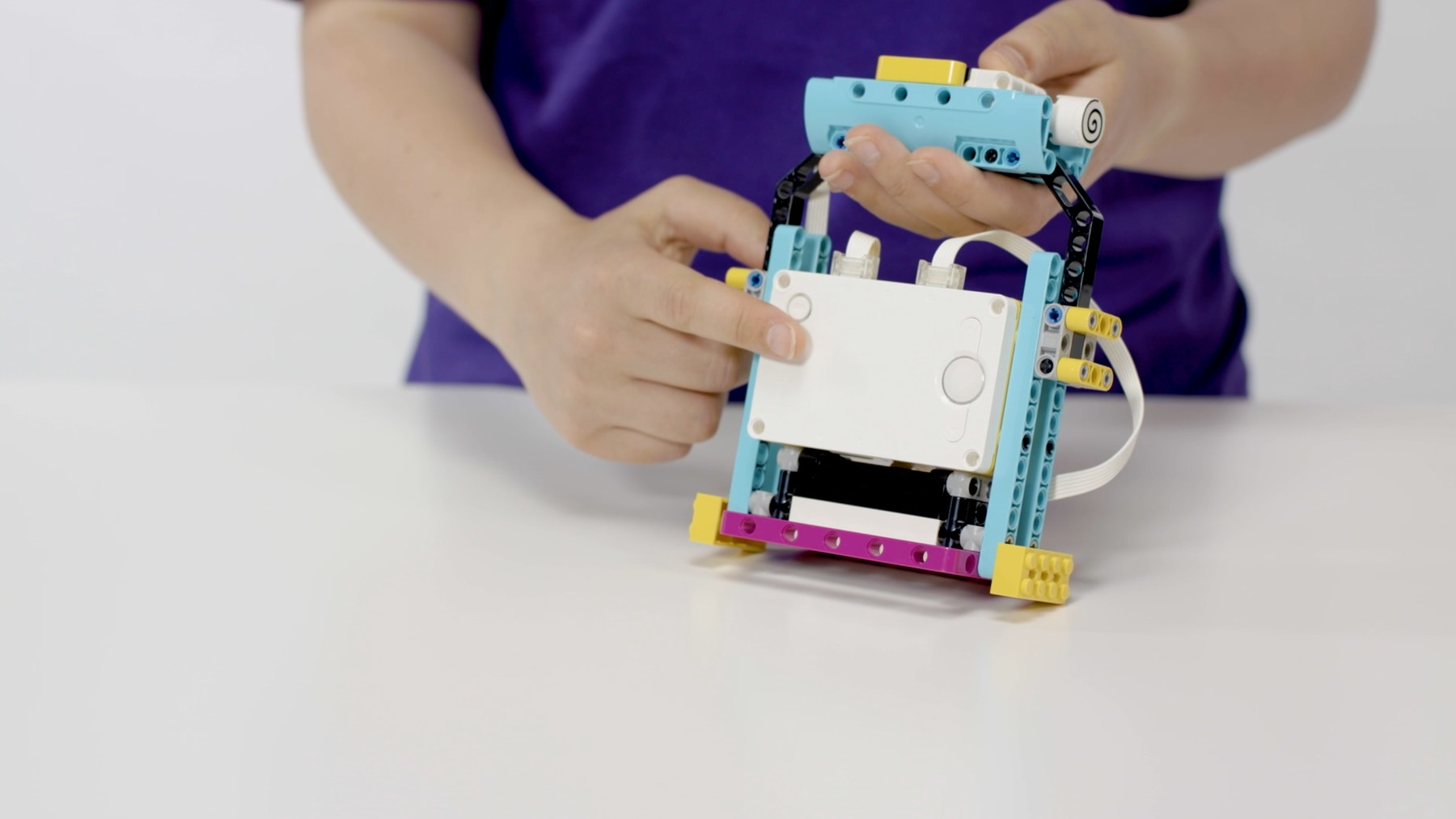
Tips
Building Tips
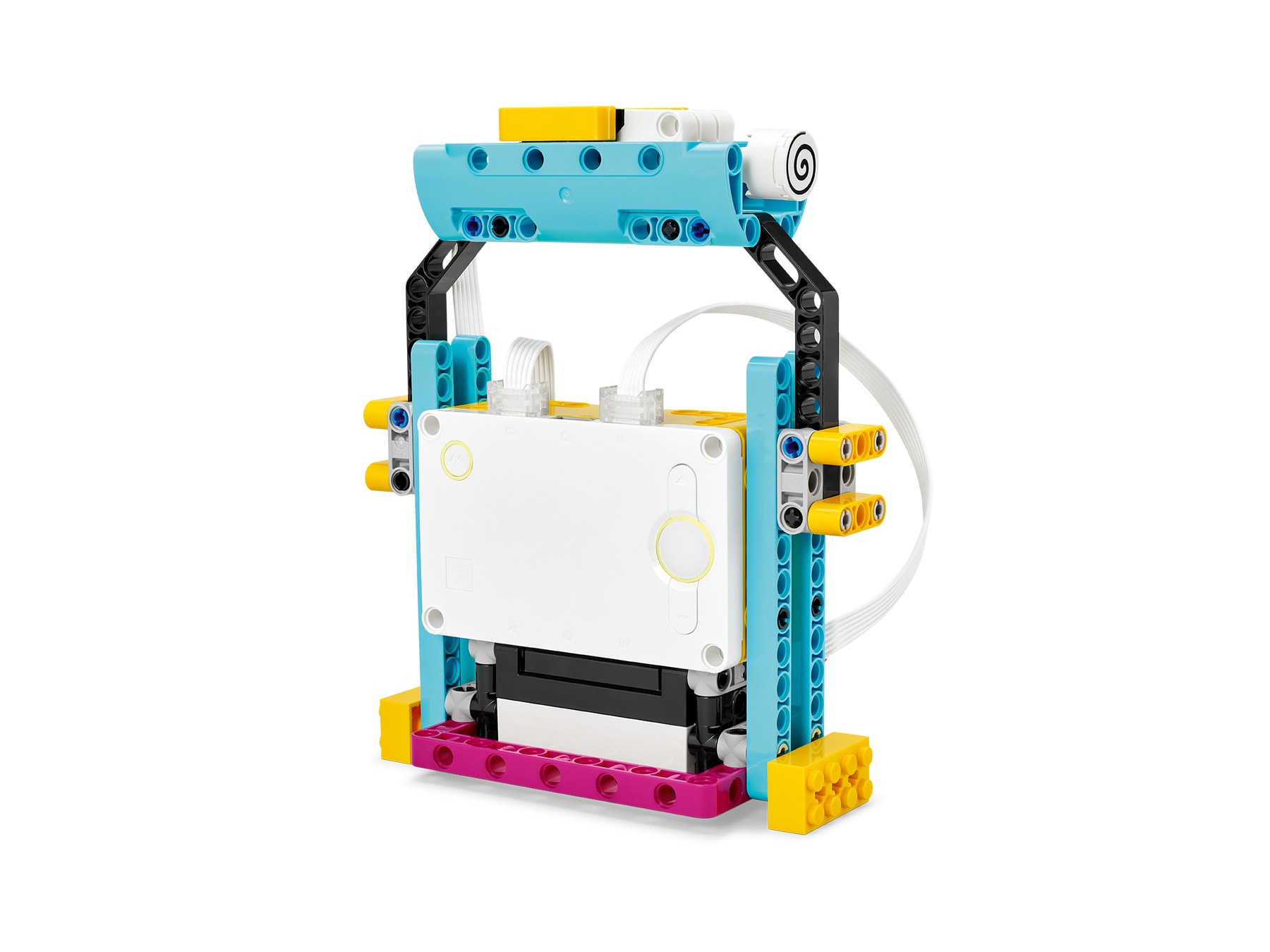
Coding Tips
This lesson is designed to be played while the hub is connected through USB or Bluetooth. While connected, the data collected by the Hub is streamed directly to your device and traced in real-time on the Line Graph.
Main Program

Solution Program

Science Data Tips
Here’s an example of the data your pupils can expect from this experiment.
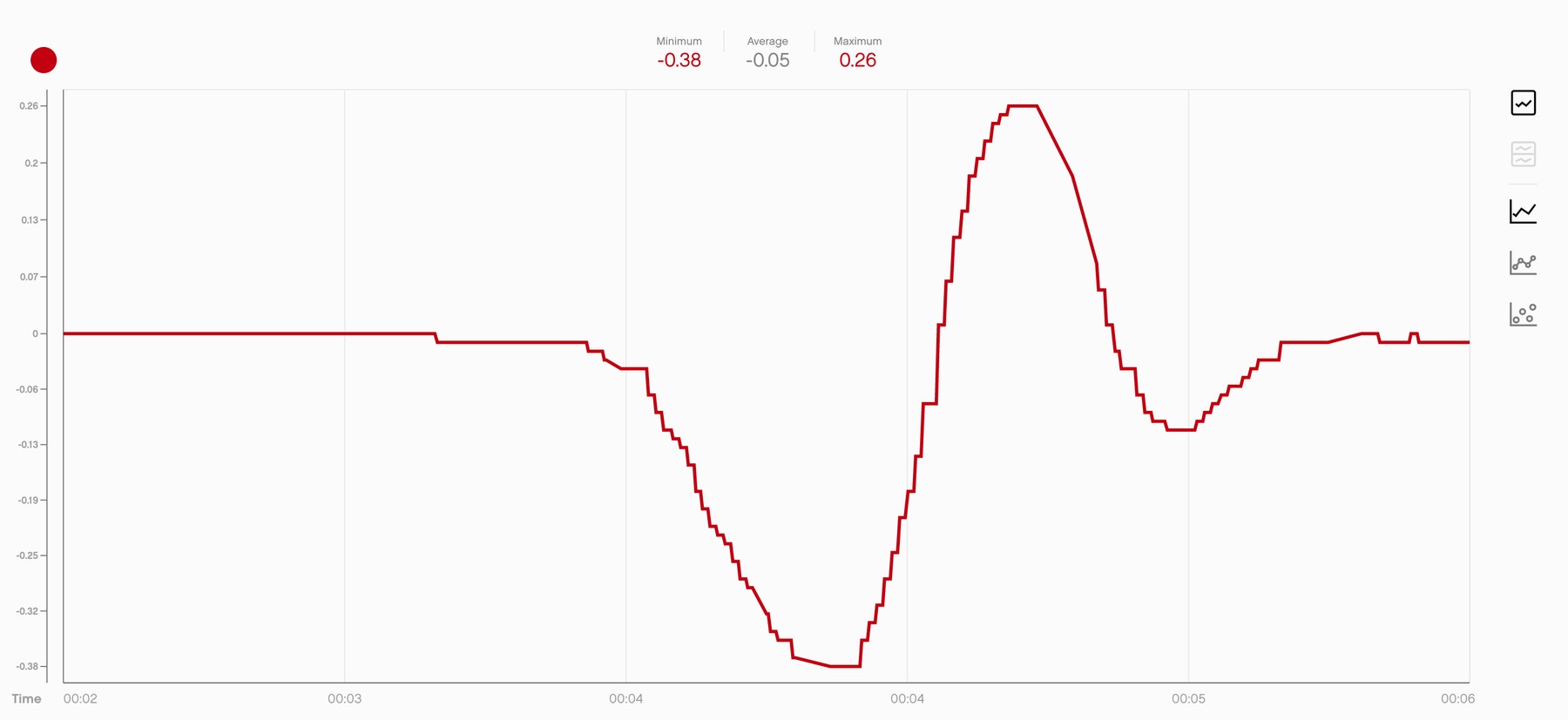
Extensions
Maths Extension
To incorporate the development of maths skills:
- Instead of using the Distance Sensor to directly log the distance between the bottom of the kettlebell and the ground, ask your pupils to use acceleration values to find the height of the jump.
- Have your pupils use both methods (i.e. directly measuring the distance, and calculating it based on acceleration values) to find the potential energy. Then ask them to describe which method they thought was the hardest or the most efficient, and why.
Note: This will require additional time.

Literacy Extension
To incorporate the development of literacy skills:
- Ask your pupils to write a short explanation explaining what happens when someone jumps. Have them research muscular strength and biomechanics, then compare human jump performance to that of different animals.
- Have your pupils investigate a robot prototype that can jump, then write an essay describing how its engineers have tried to replicate muscular impulse.
Note: This will require additional time.
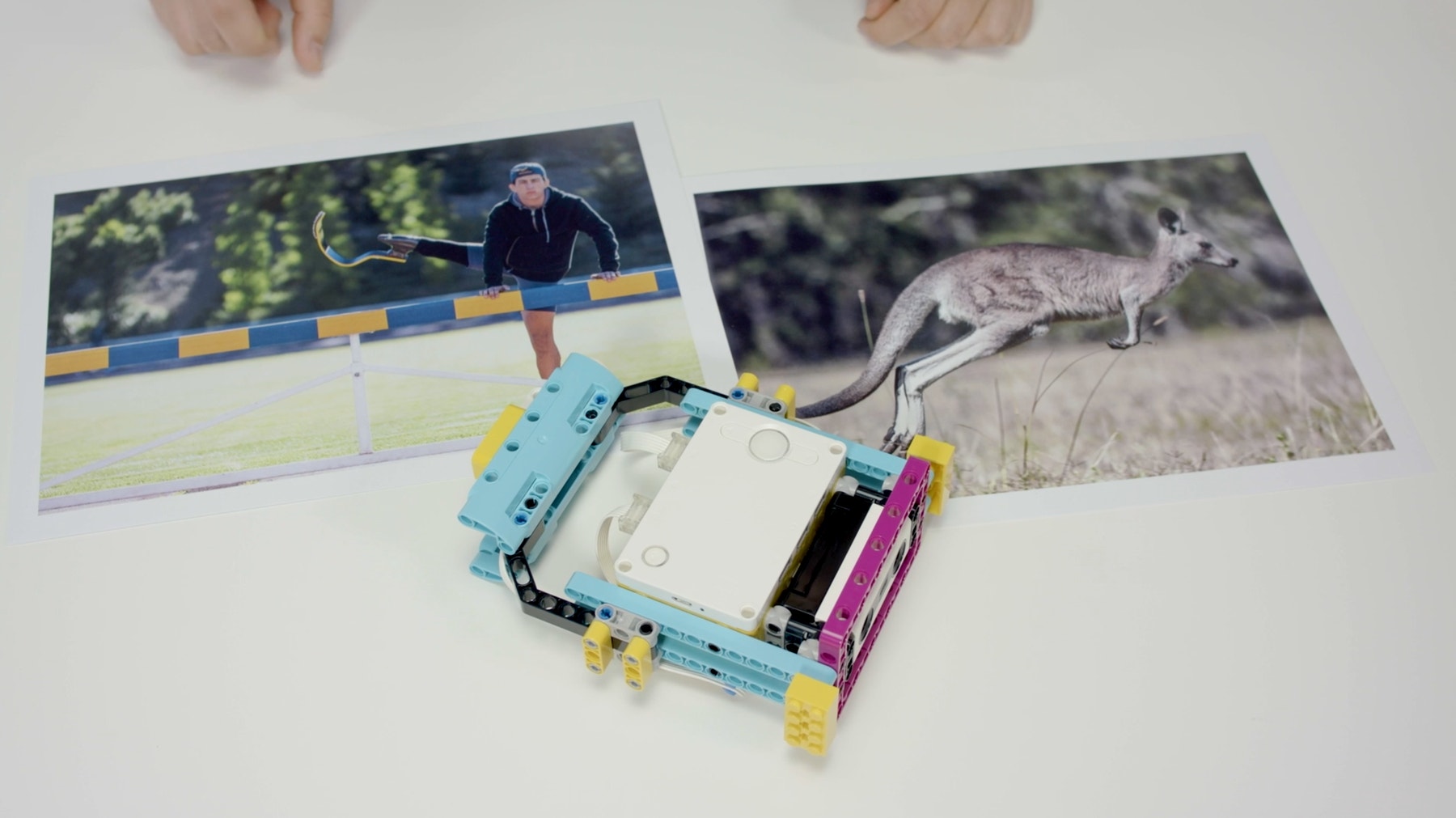
Career Links
The pupils who enjoyed this lesson might be interested in exploring these career pathways:
- Therapeutic Services
- Engineering & Technology
Teacher Support
Pupils will:
- Explore ways of measuring the height of a jump
- Use this value to calculate potential energy
LEGO® Education SPIKE™ Prime Set
Device with the LEGO Education SPIKE App installed
DFE Science Programmes of Study KS3
Experimental skills and investigations - 3
• select, plan and carry out the most appropriate types of scientific enquiries to test predictions, including identifying independent, dependent and control variables, where appropriate
Experimental skills and investigations - 5
• make and record observations and measurements using a range of methods for different investigations; and evaluate the reliability of methods and suggest possible improvements
Changes in systems - 1
• energy as a quantity that can be quantified and calculated; the total energy has the same value before and after a change
Changes in systems - 3
• using physical processes and mechanisms, rather than energy, to explain the intermediate steps that bring about such changes.
DFE Maths Programmes of Study KS3
Reason mathematically - 1
• extend and formalise their knowledge of ratio and proportion in working with measures and geometry, and in formulating proportional relations algebraically
Ratio, proportion and rates of change - 7
• relate the language of ratios and the associated calculations to the arithmetic of fractions and to linear functions
Ratio, proportion and rates of change - 8
• solve problems involving percentage change, including: percentage increase, decrease and original value problems and simple interest in financial mathematics
Ratio, proportion and rates of change - 9
• solve problems involving direct and inverse proportion, including graphical and algebraic representations
DFE English Programmes of Study KS3
Writing - 1
Pupils should be taught to:
• write accurately, fluently, effectively and at length for pleasure and information through:
• writing for a wide range of purposes and audiences, including:
• summarising and organising material, and supporting ideas and arguments with any necessary factual detail
DFE Computing Programmes of Study KS3
Subject Content – 1
• design, use and evaluate computational abstractions that model the state and behaviour of real-world problems and physical systems
Subject Content – 3
• use two or more programming languages, at least one of which is textual, to solve a variety of computational problems; make appropriate use of data structures [for example, lists, tables or arrays];
DFE Design & Tecnology Programmes of Study KS3
Design - 1
• use research and exploration, such as the study of different cultures, to identify and understand user needs
Design - 2
• identify and solve their own design problems and understand how to reformulate problems given to them
Design – 3
• develop specifications to inform the design of innovative, functional, appealing products that respond to needs in a variety of situations
Design – 4
• use a variety of approaches [for example, biomimicry and user-centred design], to generate creative ideas and avoid stereotypical responses\*Design – 5*
• develop and communicate design ideas using annotated sketches, detailed plans, 3-D and mathematical modelling, oral and digital presentations and computer-based tools
Evaluate – 3
• test, evaluate and refine their ideas and products against a specification, taking into account the views of intended users and other interested groups
Technical knowledge - 4
• apply computing and use electronics to embed intelligence in products that respond to inputs [for example, sensors], and control outputs [for example, actuators], using programmable components [for example, microcontrollers].




